I hear the question a lot – “What kind of fertilizer do you use?” The answer is a moving target. So far this year I’ve used various combinations of six different fertilizers.
My go-to fertilizers remain cottonseed meal and fish emulsion. They are affordable and they keep my trees healthy. It’s not the cleanest solution nor does it smell great, but overall the approach works well for me.
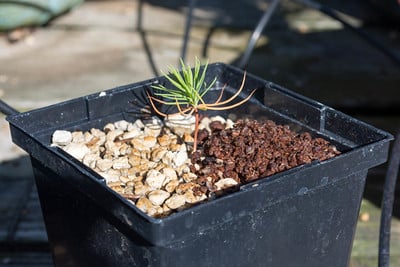
Cottonseed meal
I’m also using limited amounts of two fertilizers I’ve used before: Dr. Earth Life pellets – another organic option – and Miracle Gro. I tend to prefer organic fertilizers to inorganic ones, but I know people don’t always have options and I want to have a good idea of how different fertilizers can work for my trees.
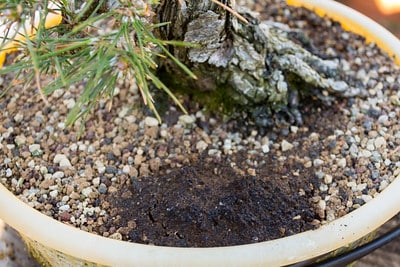
Dissolved Life pellets from Dr. Earth
I’m currently experimenting with two additional fertilizers. The first is Sumo Cakes – handmade fertilizer balls with an NPK rating of 4.8-4.8-4.8. Ingredients range from alfalfa meal to zinc sulfate with a variety both plant and animal based nutrients. I received a sample for testing purposes and look forward to learning more.
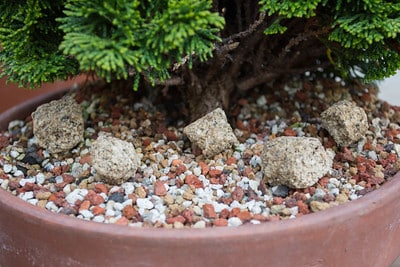
Sumo Cakes
The second fertilizer I’m experimenting with is from Japan – Tosho brand Omakase pellets, aka OOF (Odorless Organic Fertilizer). As the name OOF suggests, one of its primary good points is that the fertilizer doesn’t have a strong smell – the idea being that insects and animals are less likely to take in interest in it and eat or otherwise steal it away from our trees.
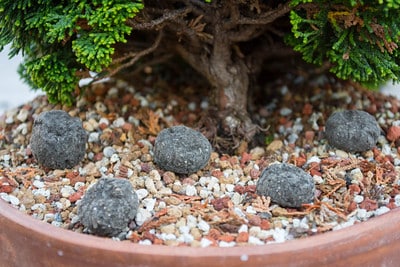
Omakase pellets
I’ve used this fertilizer before but have had trouble finding it so I brought some in from Japan (see Omakase for details). I’m very curious to see how the bonsai like it.
As for how I apply fertilizer, I use liquids through a watering can, apply solid fertilizers directly to the soil, and use tea bags filled with different fertilizers. Each has its good and bad points. I love using liquid fertilizers – they are easy to dilute and fast acting – but feeding a large collection with a watering can can take a long time.
I love the simplicity of dumping mounds of dry fertilizers directly on the surface of the soil, but this can have adverse effects on drainage and looks messy.
Nothing is faster than applying – or cleaning up – tea bags filled with fertilizer, and nothing is slower than filling them up. Not everyone thinks they look good either. But my favorite thing about them is that it’s easy to see at a glance how much food the tree is getting.
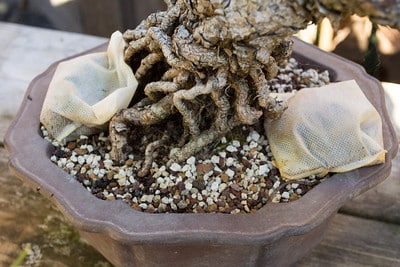
Teabags filled with organic fertilizer
Almost every tree in the garden has some sort of dry fertilizer on it – many have two or more – and almost every tree gets liquid fertilizer between one and four times per month. I like it when trees get different fertilizers as it’s a good way to spread the benefits that each fertilizer offers.
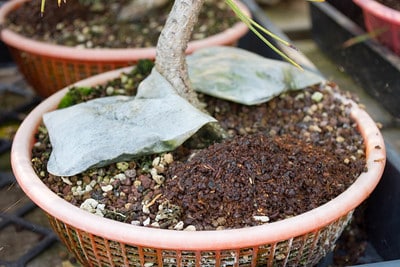
Tea bags filled with Dr. Earth Life pellets – mound of cottonseed meal in the foreground
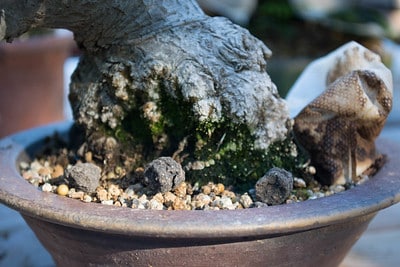
Dango – Omakase pellets – and tea bag filled with cottonseed meal
And so the experiments continue. I hope to learn a few things about bonsai fertilizer this summer, and to find new fertilizers to experiment with next year.
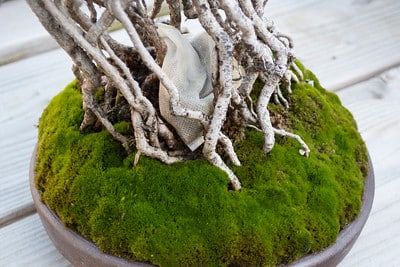
A teabag nestled among exposed roots
Feel free to share your favorites below.
Subscribe to Bonsai Tonight
New Posts Delivered Every Tuesday and Friday
Zack Clayton says
in Ohio, components are available to make DIY mixtures, but I find vermin and my schedule work better with a pre-made solution. I use a granular garden starter that averages about 10-10-10 and mix up the manufacturer for micro-nutrients that might get missed with just one brand, It works well for me and I do supplement with MiracleGro about twice a month. The granules tend not to break down quickly so clogging is not an issue for me.
carterbeall says
Have you ever tried using a hose siphon? I have heard that they are easy to use to apply liquid fertilizer to a large amount of trees, and some people even just mix up the fertilizer in a very dilute amount so that the trees get a little every time you water. I have yet to try this, but it seems that it would save a lot of time compared to mixing in a watering can.
Jonas Dupuich says
Hi Carter – I’d planned to hooking up a siphon this year but postponed it as there are usually trees in the garden that I don’t want to feed at any given time. In early spring I don’t feed trees after repotting, but I do feed the trees that didn’t need repotting. I don’t feed deciduous trees as much in spring or pines after decandling. I also avoid feeding trees that are sick, depending on the nature of the problem. I think siphons are a great solution when larger groups of trees all need the same care.
I also use fish emulsion as my primary liquid fertilizer which is a lot thicker than Miracle Gro – am curious if anyone has experience using fish emulsion with a siphon.
paul3636 says
Once a month I use an equal mixture by volume of ‘Espoma’ Holly Tone 4-3-4, Rock Phosphate 4-12-0, greensand 0-0-0.1, Kelp meal 1-0-2, (a small amount of Crab Shell 2-3-0 if available.).
In between I use Neptune’s Harvest fish and seaweed liquid fertilizer.
Some times I mix the crab shells in the soil mix.
The fish seaweed emulsion that is used as a foliage feed as well as on the soil seems to effective in getting rid of some vermin by coating their skin.
Ray Norris says
Looking forward to results Jonas.
Thanks for the information
paul3636 says
There is a garden center in Ipswich Massachusetts called Corliss bros that feeds almost exclusively with fish emulsion and I believe they use an overhead siphon. Too many trees, bushes, and plants to do otherwise.
Per says
What’s the rationale behind not feeding sick trees? Seems to me like they’d need nutrients just like any tree needs for its cellular functions
Jonas Dupuich says
Hi Per – thanks for the note. When a tree is sick from infestation, bad soil or general lack of nutrients, I’ll feed lightly. When the tree is sick from salt damage or has just lost most of its leaves from drying out, I avoid feeding. I try to keep the food in sync with the tree’s demands for water and nutrients.
mirko says
eating is important, only 10% on the cultivation of a bonsai tree,90% it is completed with the mode of irrigation
James Gielow says
Wow! That’s a lot of fertilizer! This may explain why I lost nearly all of my bonsai during last summers record drought. Perhaps they weren’t strong enough to survive it. Only bonsai I have left are of the succulent variety. It’s taken me a year to even talk about the loss I suffered last summer. My beautiful chinese elm, gone. She was my prized bonsai. I also lost my ginkgo and my lovely sequoia.
Just heart wrenching.
paul3636 says
Fertilizers are vitamins (Steroids?). Food comes from Photosynthesis (Light)
.